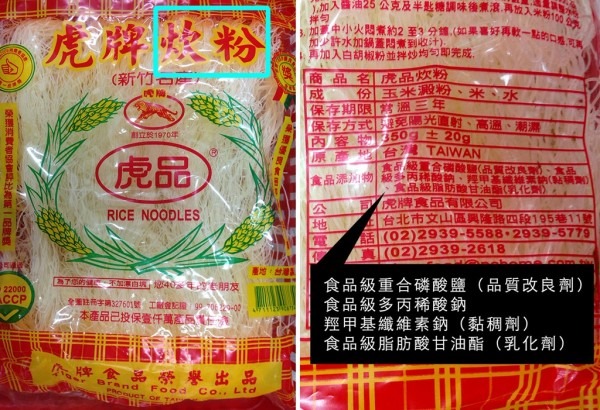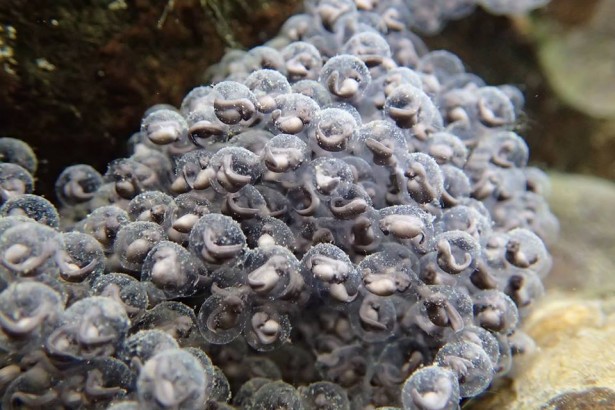Can you call it "Hsinchu rice noodles" without rice? Scholar: simply change the name to "Hsinchu starch"
Share626 + 125 Tweet2 EmailShares 653
The Food and Drug Administration's rice noodle regulations are on the road in July. More than 50% of the rice content can only be called "mixed rice noodles", and 100% rice noodles can only be called pure rice noodles. However, the Hsinchu city government wants to include "Hsinchu rice noodles" as the brand name, and recently actively lobbied the Ministry of Economic Affairs and the Food and Drug Administration to write "Hsinchu rice noodles" on the packaging produced by Hsinchu manufacturers regardless of the amount of rice. "Hsinchu rice noodles are of great cultural significance to Hsinchu, and these four words must not disappear."
However, Zhang Weiqi, a professor of bamboo education who has long studied food culture, refutes: "if rice noodles contain only 1% of rice, you might as well call it Hsinchu starch!" Japan also has local food certification, but it is required that according to the ancient method, or that the raw materials are linked to the local culture. The word Hsinchu rice noodles can be retained, but the rice content must be at least 50%. Otherwise, the city government is tantamount to throwing stones at its own feet. "Let the brand of Hsinchu rice noodles break."
Mayor of Hsinchu: "Hsinchu Rice Noodle" has local cultural significance and must be preserved.
At the beginning of last year, the upstream and downstream revealed that 90% of the rice noodles on the market were heavily used corn starch, which contained less than half of the rice. In November last year, the Food and Drug Administration of the Ministry of Health and Welfare announced the regulations on the labeling of packaged rice vermicelli products sold on the market, with 100% of the rice content. Only the product name can write pure rice noodles (silk), more than 50% is called blended rice noodles (silk). If it is less than half, the word "rice noodles" cannot appear. It is also required to indicate the rice content, and the font should not be less than 4 centimeters, which will take effect on July 1 this year.
However, as soon as the new law was announced, it immediately caused a backlash from the rice noodle industry in Hsinchu, criticizing the move to destroy the 100-year-old Hsinchu rice noodle industry. With only half a month left on the road, the Hsinchu municipal government released a micro film on Hsinchu rice noodles the day before yesterday, and the print media reported that Mayor Xu Mingcai said that Hsinchu rice noodles is a brand of Hsinchu, and the central government is forced to change its name, just as it was unreasonable to change the Hsinchu Science Park into a "northern science park." "the Hsinchu municipal government will not only do its utmost to assist the families of Hsinchu rice noodles to adhere to the tradition," and "vowed that the words' Hsinchu rice noodles' will never disappear."
In an interview with the upstream and downstream yesterday, Xu Mingcai confirmed that he had reflected to the Bureau of Standards and Inspection of the Ministry of Economic Affairs and the Ministry of Health and Welfare that he hoped to regard the word "Hsinchu rice noodles" as a "brand". In addition, the rice content, ingredients, mixed rice noodles or corn starch are marked, because Hsinchu rice noodles have deep local cultural significance and are a kind of "goodwill", which must be well preserved. "otherwise, will the rice noodles made in Hsinchu be called Taipei rice noodles?" He said that after communicating with the Ministry of Economic Affairs and the Ministry of Health and Welfare, the two units had no objection.
Guo Wenming, chairman of the Hsinchu Rice Noodle Commercial Association, agreed with the city government, and reiterated: "Hsinchu Rice Noodle is not a product name, but a local feature." Operators can label Hsinchu rice noodles and write rice noodles, mixed rice noodles, or Hsinchu cooking noodles or gouache on the packaging. It is not easy for operators to use Hsinchu rice noodles to become famous in China and the Philippines. If you remove these four words, it will have a great impact on the industry.
After July, the operators first changed Hsinchu cooking powder and gouache.
In addition, at a meeting at the end of last month, the Hsinchu Rice Noodle Association decided to change its name to "Hsinchu Cooking Noodle" or "Hsinchu gouache" when the rice content is less than 50%. But why are the operators unwilling to increase the rice content?. Guo Wenming said that it is not impossible to do it. Many factories also make both starch and pure rice noodles at the same time, but the cost is too high and the cooking is so soft that consumers may not be able to accept it. Corn starch is to increase the taste. More than 90% of the rice on the market now contains less than half of it.
Gou Wen-Ming believes that the industry is working very hard to inherit the rice noodle culture, but it should depend on consumer preferences. As long as it is clearly marked, there will be no problem. He asks that some people object to them calling Hsinchu rice noodles, "what else are you going to call us?" The alcohol concentration of 5% and 3% is also called alcohol. Why does the government not say that the alcohol content is too low to be called wine? the government cannot just slander the four words "Hsinchu rice noodles".


Dong Decheng, a rice noodle maker, said that he would insist on using 100% pure rice to make rice noodles until the day the lights were turned off. (photo / Lin Huizhen)
However, Zhang Weiqi, an associate professor in the Department of Environment and Cultural Resources at Hsinchu Education University, who has long studied food culture, disagrees with the industry and the city government. He says that the goal of the Hsinchu city government is very similar to Japan's "regional food certification system." however, Japanese regional food considers "raw materials" and "preparation methods," such as whether the raw materials are connected to the local environment, whether the raw materials are connected to the local environment, and whether they follow the ancient methods and do not add additives. To put it simply, it is "Grandma's taste."
But the Hsinchu city government now allows businesses with less than 50% rice to be called "Hsinchu rice noodles," which is tantamount to throwing stones at their own feet. "if rice noodles contain only 1% of rice, just call it Hsinchu starch!"
Zhang Weiqi, a native of Hsinchu, has a deep affection for Hsinchu rice noodles. She points out that Hsinchu has a deep rice noodle culture. Only Hsinchu can carefully divide gouache and cooking noodles. The biggest difference lies in the manufacturing process. When gouache is made, it is directly boiled with water after being extruded. The structure is relatively short and thick, cooking powder is steamed in a steamer, and Taiwanese steaming means "cooking", which is much finer than gouache. Almost all the rice noodles you see now are cooking noodles. What remains unchanged is that the rice content should be more than 50%, and the industry will change it into cooking powder, which will all be mixed together, distorting culture and local knowledge.
Ye Anyi, a contracted professor at the Institute of Food Science and Technology at National Taiwan University, was a wheat starch salesman more than 30 years ago. He points out that at that time, some rice flour manufacturers also used wheat starch, but some still insisted on using 100% pure rice and rejected his promotion. It is obvious that pure rice noodles are not impossible. The Hsinchu government interprets "Hsinchu rice noodles" as a brand, just like the concepts of sun cakes and old lady cakes, but focuses on consumer awareness. "people don't feel that there is the sun in the sun cakes, but they generally think that there should be rice in the rice noodles, and the logic of the two is different. The city government's argument is too far-fetched."
Ironically, many of the rice noodle micro-films publicized by the Hsinchu city government the day before yesterday are looking for a small number of local pure rice noodle manufacturers, praising their hard work in inheriting and adhering to the culture of their predecessors.
Zhang Weiqi stressed that it is not to crack down on the gold-lettered signboard of Hsinchu rice noodles, on the contrary, the requirement of 50% rice content is intended to maintain the brand and avoid the stigmatization of Hsinchu rice noodles, so that export can last for a long time. "the city government says it wants to inherit the rice noodle culture. Is the Hsinchu rice noodle culture a fake culture?. In the future, what is called Hsinchu rice noodles is a fraud? "
Food and Drug Administration: the word "rice noodle" must not appear when the rice content is less than 50%.
Guo Wenming pointed out that after the press conference the day before yesterday, the city government held another meeting with the Ministry of Health and Welfare and the Ministry of Economic Affairs yesterday afternoon to coordinate the marking issue. However, Yang Yizhen, chief of the Food and Drug Administration, said that no message had been received, but the law clearly required that as long as the rice content was less than 50%, the word rice noodle must not appear in the package. the guild can register the trademark "Hsinchu Rice Noodle", but the FDA does not encourage it. Whether it is suspected of being misleading depends on the overall packaging. For example, if the word "Hsinchu Rice Noodle" is very large, it may mislead consumers and will further communicate with the municipal government.
Share626 + 125 Tweet2 EmailShares 653
Related
- A course of planting techniques and methods on how to grow carrots
- How to plant the latest tulips?
- Is it better to pick tea in the morning or in the afternoon? When is the best time for tea to be picked? what is the third or fifth tea?
- Launch Yuanxiao Happy combination Haocha + Tea Yuan healthy Taste
- Penghu Tourism "Fireworks 20 Parade with You"
- 2022 West Lake Happiness holds "Digital Revitalization Voucher" and draws iphone13 and laptop.
- Banqiao Fuzhou social houses are designed to change start-up combined with police elimination to create a safe and livable environment
- The convenient measure of "mechanical weeding" in Xinbei has been abused and the Agriculture Bureau has imposed heavy penalties on the illegal land consolidation.
- Changgeng University Joins Hands with Four Memory Factories to Rescue Memory Talent Shortage
- The list of Taiwan's top 100 MVP managers is listed by the Director-General of the Farmers' Association of Sanxia District.



